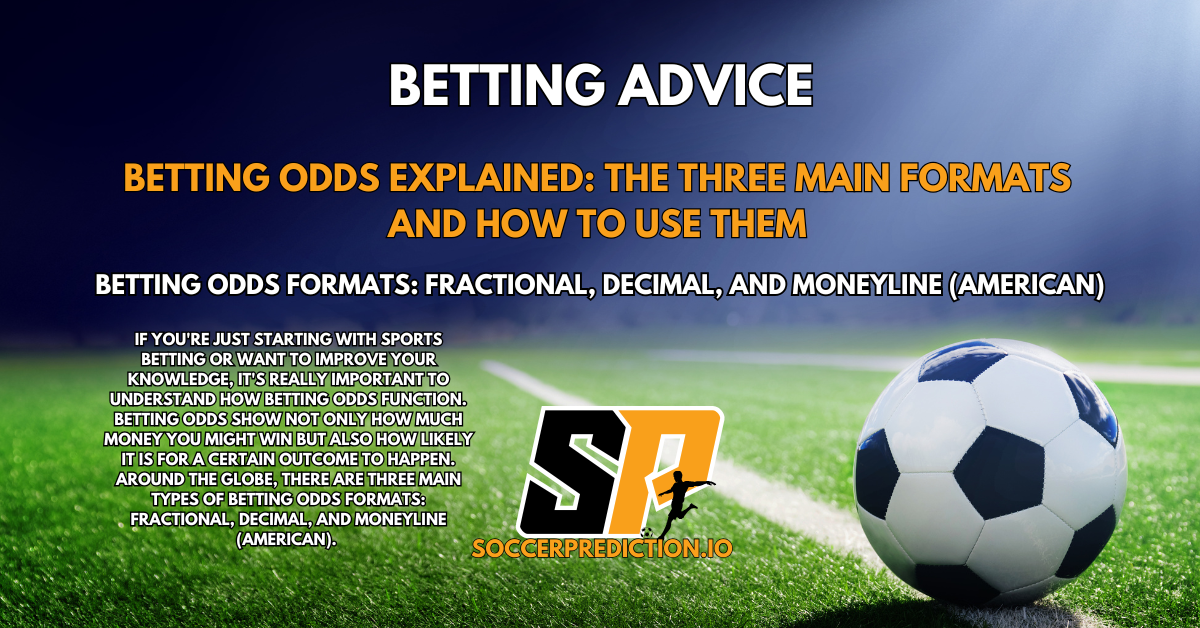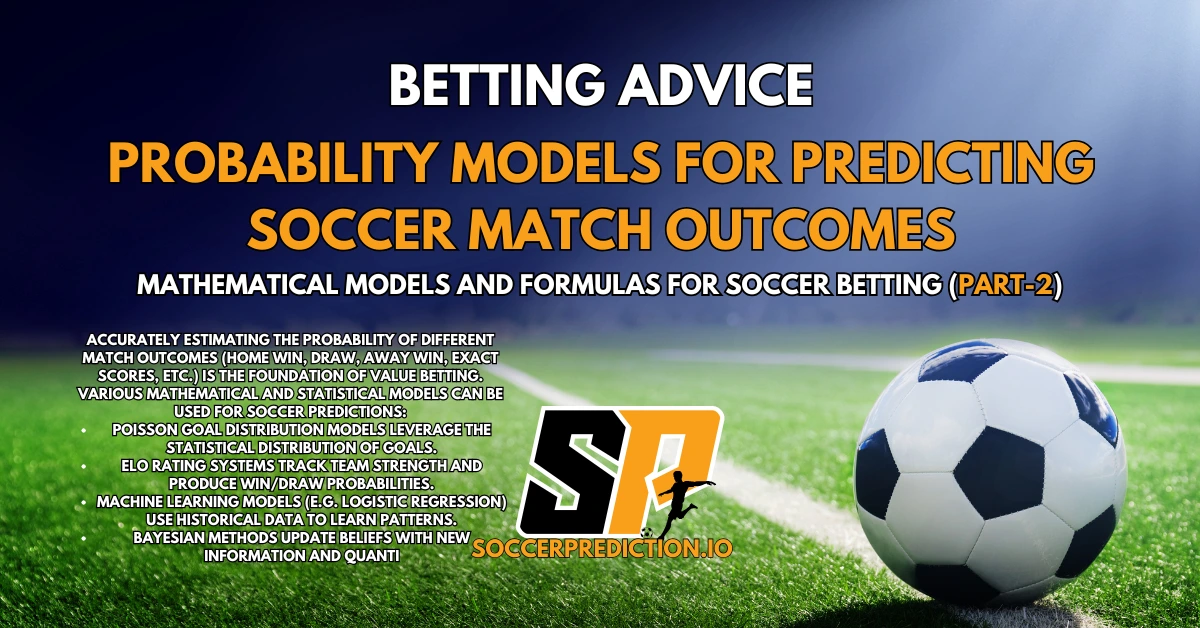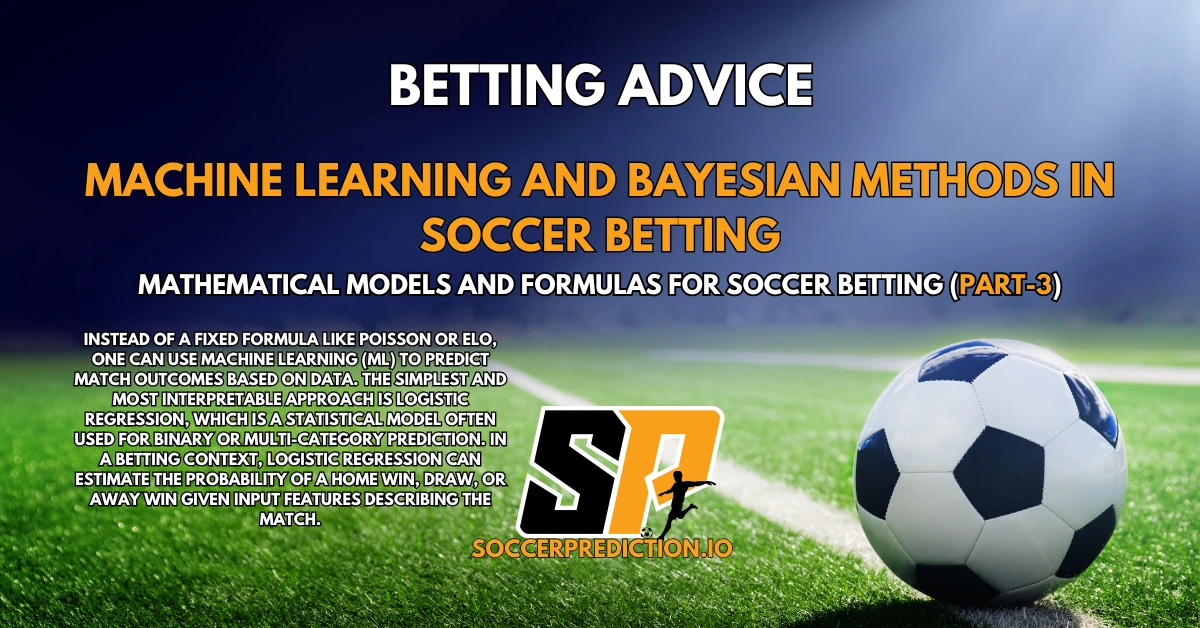Beyond the core models and metrics discussed, several additional concepts are important in quantitative soccer betting analysis:

Table of Contents
Home Advantage
Home advantage is a well-documented phenomenon in soccer: home teams win more often and score more goals on average than away teams. On average, home teams might get a boost equivalent to roughly 0.3 to 0.5 goals per game, though it varies by league and over time. Any predictive model should account for this bias.
In the English Premier League 2015/16, for example, the average goals scored per game were 1.492 for home teams vs 1.208 for away teams. Home teams not only score more but also concede fewer (since away teams scored 1.208 on average, implying home teams conceded the same). This difference translates to home teams having a higher probability of winning even if teams are of equal strength.
Incorporating home advantage: In Poisson models, we saw that we calculate separate average goals for home and away and use those in deriving team strengths. Essentially, a team’s attack or defense rating can be split into home and away components. Some models just add a fixed “home advantage factor” to the home team’s expected goals (or to the log-odds in a logistic model). For Elo, as mentioned, one might add ~100 Elo points to the home team for calculation purposes.
Why does home advantage exist? Factors include crowd support, familiar pitch conditions, reduced travel fatigue, and possibly referee bias (subconscious or otherwise) favoring home side in 50-50 calls. It has diminished in some places (data showed a dip when matches were played without fans during COVID-19, for instance), but it’s still significant.
Implication for betting: Don’t underestimate a home underdog – the venue can shift probabilities. If two teams are equal, the home team should be favored. If using raw statistics, always separate home and away performance. When you see a team with a strong home record versus a poor-traveling team, your model should capture that. Some bettors even have a custom home advantage for each team (e.g., teams with long travel distances to their location, or certain atmospheres, might have a bigger edge at home).
If you ignore home advantage in your model, you will systematically mis-price games – typically you’d give too much credit to the away team.
Team Strength and Ratings
Properly quantifying team strength is at the heart of predictive modeling. We’ve touched on Elo ratings and attack/defense ratings for Poisson; these are examples of team strength metrics.
Attack and defense ratings (Dixon-Coles model): The approach in Section 2.1 basically gives each team an attack coefficient and defense coefficient, such that expected goals for Team_i vs Team_j is $\lambda = \text{Attack}_i \times \text{Defense}_j \times \text{LeagueAvg}$. These coefficients can be derived by fitting historical score data (e.g., via maximum likelihood). A famous implementation is the Dixon & Coles model (1997), which adds a small covariance for low-scoring draws. If you fit such a model, you get a rating for every team’s offense and defense. For example, after a season you might find TeamA attack = 1.3, TeamA defense = 0.8, TeamB attack = 0.9, TeamB defense = 1.1, etc. Those numbers indicate how strong they are relative to average (1.0 being average). These ratings can then predict future matches (with adjustments for home field).
Elo and other ratings: Instead of separate attack/defense, Elo produces one number per team that encapsulates overall strength (often implicitly a combination of offense and defense performance, weighted by results). Some systems like Glicko (an Elo variant) or TrueSkill maintain a rating and a confidence interval for each team, updating after matches.
Player-based ratings: More granularly, one could aggregate team strength from individual player ratings (like using something akin to FIFA video game ratings or advanced metrics for players and seeing who is in the lineup). This can be complex but some advanced bettors and analysts do incorporate player values or expected goals (xG) contribution to adjust team strength when lineups change.
Recent form vs long-term strength: A perennial question is how much to weigh recent performance (last 5 games, etc.) versus long-term ratings. Recent form might capture momentum or new tactics (say a team improves after a coaching change), but it can also be noisy (a couple of fluke results). Models often use a decaying weight or a rolling window. Elo, for instance, inherently weighs recent results more (depending on K factor). A Bayesian approach inherently can discount older data as new data comes in.
In-play strength adjustments: Live betting models often update team strength estimates during a match (if, say, a clear dominance is observed in first half, or a key player is injured). That’s beyond pre-match scope, but shows that team strength is a fluid concept.
For a value bettor, having a good handle on team strength is crucial. It’s often the primary driver of odds. If your assessment of team strength differs from the market’s, that’s where you may find value. For example, if you think Team A is underrated because they had a couple of unlucky losses (your model still rates their underlying strength high), the odds might undervalue them in upcoming matches – an opportunity for value bets.
It’s wise to continuously update and validate whatever rating system you use. If you find your team ratings are lagging (say, your model was slow to catch Leicester City’s rise in 2015–16, while the odds shifted faster), you may adjust the responsiveness. On the other hand, avoid overreacting to one-off events: a big 5-0 win might not mean a team suddenly has 5× attack strength; check if it was due to unusual circumstances.
Overfitting and Underfitting
When building predictive models, especially with machine learning, we must guard against overfitting (modeling the noise) and underfitting (failing to capture the signal).
Overfitting: This happens when your model is too complex relative to the amount of data or the underlying complexity of the problem. An overfit model will match past data very closely (perhaps using a lot of specific rules or parameters), but it will perform poorly on new, unseen data because it was essentially “memorizing” the quirks of the historical sample rather than learning generalizable patterns. In betting terms, an overfit model might seem amazing on back-tested results (it “predicts” past matches with high accuracy or profit), but then fails miserably in live betting. This could happen if, for example, you include too many features in a logistic regression (some of which might be only coincidentally correlated with wins in the past). One sign of overfitting is if adding more data (e.g., another season of matches) makes your model’s performance worse, or if there’s a large gap between training accuracy and test (out-of-sample) accuracy.
Underfitting: This is when your model is too simple to capture the real patterns. For example, just using league average probabilities for every match (ignoring team differences) is underfitting – you’d predict every match as roughly home win 45%, draw 25%, away 30% (say) and ignore important info like team form or strength. Underfit models have poor performance even on training data, indicating they are not using available information.
Avoiding overfitting:
Feature selection/regularization: If you have many potential input variables, use techniques to select a subset of truly predictive features. In the earlier example, 90 raw features were reduced to 6 key ones to avoid multicollinearity and overfit. Regularization (like Lasso or Ridge in regression) adds a penalty for complexity, effectively shrinking unneeded coefficient values toward zero.
Cross-validation: Test your model’s picks on data it wasn’t trained on. For instance, train on past seasons and validate on a recent season to see if it still finds winners. Or use k-fold cross-validation within the data. If performance drops significantly outside the training sample, you likely have overfitting.
Simpler models / domain knowledge: Sometimes a complex model doesn’t beat a simpler model that’s grounded in domain insights. For example, a Poisson model with a tweak for home advantage might outperform a black-box ML model that considered 50 features but got confused. It’s often effective to start simple (ensure you can beat baseline methods) and only add complexity if it demonstrably improves out-of-sample predictions.
Don’t over-tune to historical odds: If you train a model using the closing odds as a feature (some people do to calibrate their models), be careful – you might just be echoing the bookmaker. Your goal is to beat the bookmaker, not match them. If your model is too entwined with historical market data, it may not generalize when the market moves differently in the future.
Beware data mining biases: If you test 100 angles or systems on past data, by pure chance a few will look great (p-value problem). Always apply statistical rigor or at least skepticism: a strategy should have an underlying logical reason to work, not just an impressive backtest.
Avoiding underfitting:
Ensure your model has the key predictors. If you find your model consistently misses obvious things (like it rates all top teams the same as bottom teams, or predicts every match as a 1-1 draw), it might be too constrained. Add relevant features (maybe your model lacked a proper team strength indicator or didn’t account for a star player’s impact).
Use ensemble or mixture of models if one model alone is too simplistic. For instance, you can combine a Poisson approach for scores with a logistic adjustment for special conditions.
Allow your model to be updated. An underfit scenario in betting is clinging to old priors for too long – e.g., still rating a traditionally good team highly even in a season where they are clearly doing poorly. If your model doesn’t update, it will underfit the current reality. Techniques like assigning higher weight to recent matches (in Elo or others) can help avoid this.
In practice, strike a balance: you want a model complex enough to capture real factors (team quality, home advantage, etc.) but not so complex that it starts chasing noise (like “Team X wins every rainy Wednesday at home” kind of spurious patterns). Simpler models are often more robust in betting, which is why approaches like Elo or Poisson remain popular. That said, leveraging more data smartly (for example, incorporating expected goals or shot data) can improve predictions if done carefully.
Finally, always test your strategy forward. Paper trade or simulate how your model’s bets would do on the next set of matches. Monitor results over a significant sample (e.g. a full season). If it doesn’t perform as expected, revisit the model – maybe it was overfit or missing something. Continuous improvement and validation is key; the betting markets also evolve, so models might need recalibration over time.









